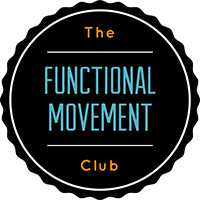A Comprehensive Guide to Plantar Fasciitis: Understanding, Treating, and Rehabilitating
Introduction:
Plantar fasciitis is a common foot condition that affects millions of people worldwide. Characterized by pain in the heel and along the arch of the foot, it can be a persistent and debilitating issue if not addressed properly. In this article, we’ll delve into the causes of plantar fasciitis, the best practices for treating it, and a comprehensive rehabilitation program to help you overcome it.
PSST . . . Heres a FREEBIE I made for you
Understanding Plantar Fasciitis:
Plantar fasciitis is often described as sharp, stabbing pain in the heel, particularly when taking the first steps in the morning or after long periods of rest. This pain is attributed to inflammation of the plantar fascia, a thick band of tissue that runs along the bottom of the foot, connecting the heel bone to the toes.
The plantar fascia plays a crucial role in supporting the arch of the foot and absorbing shock during activities like walking, running, and jumping. When subjected to excessive stress or tension, the plantar fascia can become inflamed, leading to pain and discomfort.
Treatment Approaches:
The key to effectively treating plantar fasciitis lies in addressing both the symptoms and underlying causes of the condition. While rest, ice, and over-the-counter pain medications can provide temporary relief, a comprehensive rehabilitation program is essential for long-term recovery.
Here, we outline a series of exercises and techniques aimed at relieving pain, strengthening the affected muscles, and restoring normal function to the foot.
-
Plantar Fascia Release:
- Using a ball or frozen water bottle, roll the sole of your foot back and forth for 30 seconds to 1 minute.
- Focus on areas of tightness and discomfort, applying gentle pressure to release tension in the plantar fascia.
-
Isometric Calf Raises:
- Place a folded towel under the toes of one foot, keeping the heel on the ground.
- Lift the heel as high as possible, engaging the calf muscles, and hold the position for 15-30 seconds.
- Repeat for 3 sets on each foot, gradually increasing the duration of the hold as strength improves.
-
Glute Activation:
- Secure a resistance band around the base of the big toe and loop the other end around the ankle.
- Perform lateral toe taps, moving the foot outward against the resistance of the band.
- Aim for 2 sets of 15 repetitions on each foot, focusing on proper form and controlled movement.
-
Single Leg Toe Touch:
- Stand on one leg with a slight bend in the knee.
- Reach down and touch the ankle or heel of the same foot with the opposite hand, maintaining balance and stability.
- Perform 2 sets of 10-15 repetitions on each leg, gradually increasing the range of motion as flexibility improves.
-
Hopping Protocol:
- Begin with single-leg hops in place, focusing on quick, explosive movements.
- Progress to forward, backward, and lateral hops, aiming for 3 sets of 15 repetitions in each direction.
- Gradually increase the intensity and complexity of the hops as strength and coordination improve.
Conclusion:
By incorporating these exercises into your daily routine, you can effectively manage and rehabilitate plantar fasciitis, restoring pain-free movement and function to your feet. Remember to start gradually and progress at your own pace, listening to your body and adjusting the intensity as needed. With patience and persistence, you can overcome plantar fasciitis and return to the activities you love. If you have any questions or concerns, don’t hesitate to consult with a healthcare professional for personalized guidance and support.






